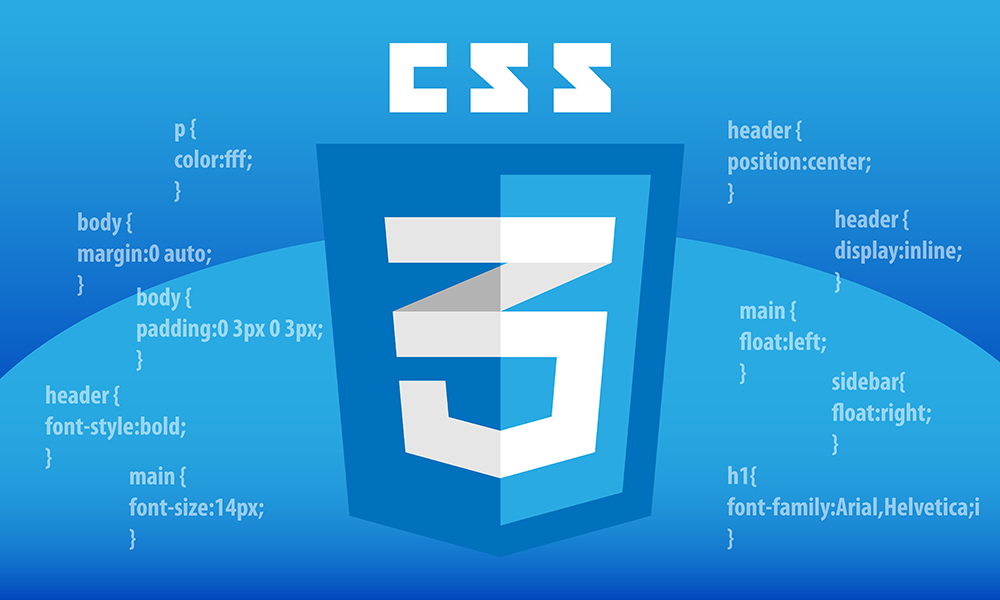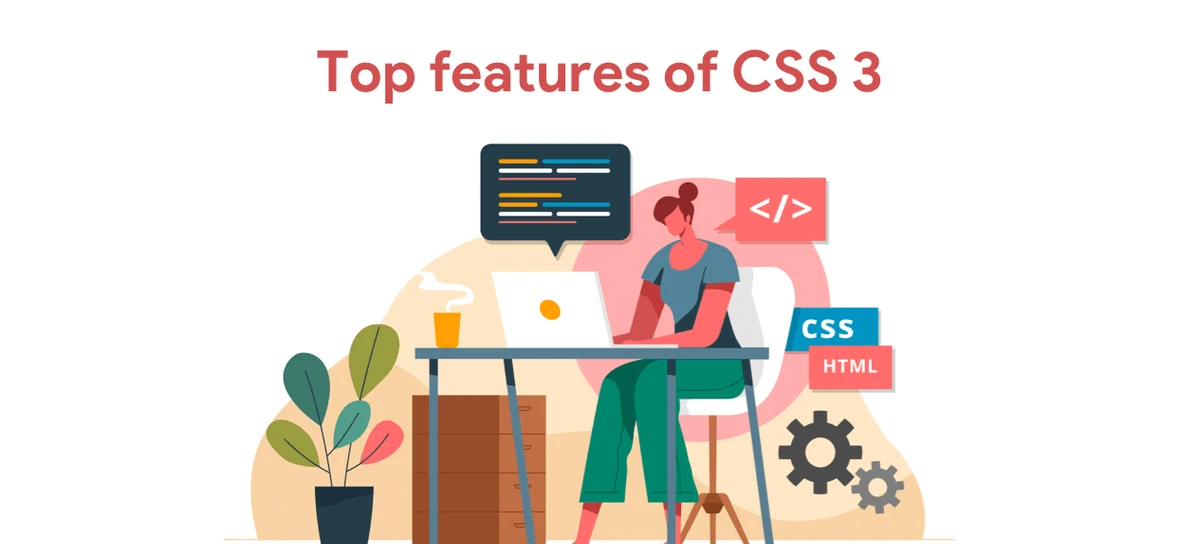Have you ever visited a website and instantly noticed the vibrant colors, stylish fonts, clean layouts, and smooth animations? All these visual aspects come from CSS, which stands for Cascading Style Sheets. CSS gives instructions to your browser on how to display HTML elements on the page. The release of CSS3 introduced numerous features that helped web developers create faster and improved websites. This article aims to explain and showcase top CSS3 features in an easy-to-understand way.
What is CSS3?

CSS3 stands for Cascading Style Sheets Level 3. It is the third version of the CSS language, which influences how web pages look. It manages fonts, colors, spacing, layouts, animations, and other visual elements of a website. It's divided into modules, each bringing new styling features such as borders, backgrounds, transitions, or flexible layouts. It works on top of HTML structure to create a more user-friendly and visually appealing website. All the most widely used browsers, like Chrome, Firefox, Safari, and Edge, support CSS3.
Top CSS3 Features:
1. Rounded Corners (Border Radius)
CSS3 allows you to make smooth rounded corners for website elements like buttons, boxes, and containers. You don't need images or extra code to do this anymore.
Syntax:
.box {
width: 200px;
height: 200px;
background-color: skyblue;
border-radius: 20px;
}
Explanation:
border-radius shapes the corners of an element. You can choose any of the units like px, em, or % to implement it. For instance, border-radius: 50% creates a perfect circle. In the earlier versions of CSS, a developer needed images or complex code to create such effects. Now you can do this with one line. You can also set different radius values for each corner using border-top-left-radius, border-top-right-radius, and so on.
2. Box Shadow and Text Shadow
CSS3 allows you to add shadows to boxes and text to bring depth and highlight the important content.
Syntax:
.shadow-box { width: 200px; height: 100px; background-color: lightgreen; box-shadow: 5px 5px 10px gray; } .text-shadow { font-size: 30px; color: black; text-shadow: 2px 2px 4px darkgray; }
Explanation:
box-shadow adds a shadow outside or inside an element. It accepts values to define horizontal offset, vertical offset, blur, and color. You can also add multiple shadows by using a comma. In the same way, text-shadow puts a shadow on text. It makes text easier to read and draws attention to it. Shadows create a 3D look without needing images. You can also make these shadows move with transitions. Designers often use shadows in cards, buttons, and headers. They give the design a rich and clean appearance.
3. Transitions
Transitions make style changes smooth rather than sudden. You can animate color, size, background, or any CSS property.
Syntax:
.button {
background-color: orange;
transition: background-color 0.5s ease;
}
.button:hover {
background-color: red;
}
Explanation:
When your mouse moves over the button, the color doesn't change right away instead, it shifts slowly. The transition property sets how long this change takes and how it happens. The ease value controls the speed pattern. You can also choose linear, ease-in, ease-out, or ease-in-out. You can even add multiple transitions like transition: color 1s font-size 0.5s. Transitions make the UI feel more natural. Designers use them for hover effects, menus, sliders, and image galleries. Transitions let you create motion without needing JavaScript.
4. Flexbox (Flexible Box Layout)
Flexbox is a CSS3 layout system. It organizes items into rows or columns. It also tweaks size and space on its own.
Syntax:
.container { display: flex; justify-content: space-between; align-items: center; } .item { width: 100px; height: 100px; background-color: lightcoral; }
Explanation:
display: flex turns on the flexbox layout. justify-content manages spacing in the main direction. align-items line up items in the cross direction. Items wrap on their own and take up space properly. Flexbox performs better than float and table layouts. It handles dynamic screens and responsive designs well. You can build headers, footers, cards, and center items without much fuss. Flexbox also lets you order, stretch, and shrink items. It cuts down on time and makes layout design simpler.
5. Media Queries (Responsive Design)
Media queries help you create web pages that look good on different screen sizes like mobile, tablet, and desktop.
Syntax:
body { background-color: white; } @media screen and (max-width: 600px) { body { background-color: lightgray; } }
Explanation:
@media checks the screen size and applies styles when the condition matches. If the screen width is 600 pixels or less, the background becomes gray. Media queries allow you to control font size, layout, visibility, and position. This makes the website adapt to different devices. Users enjoy a smooth experience across all platforms. Media queries play a key role in mobile-first design. You can combine conditions such as min-width, max-height, orientation, etc. They ensure websites look good on every device.
6. Animations
CSS3 has an influence on creating complex animations without using JavaScript. You set keyframes and apply them to elements.
Syntax:
@keyframes move { 0% { left: 0px; } 100% { left: 200px; } } .box { position: relative; width: 100px; height: 100px; background-color: teal; animation: move 2s infinite alternate; }
Explanation:
Animations guide elements along a set path. The @keyframes rule establishes the movement steps. You set the beginning and end positions. The animation property manages duration, repetition, and direction. You can include extra stages like 0%, 50%, and 100% to create a smoother motion. Websites use animations in loaders, banners, image sliders, and icons. They add fun and interactivity to websites. You can mix animations with delays and easing effects to gain better control.
7. Custom Fonts (Web Fonts)
CSS3 lets you use any font with the @font-face rule. You're no longer stuck with just the default system fonts.
Syntax:
@font-face { font-family: "MyFont"; src: url("myfont.woff"); } .text { font-family: "MyFont", sans-serif; }
Explanation:
@font-face allows you to define a custom font from a file. You can use .woff, .ttf, or .otf formats. After loading, you apply it using font-family. This gives you control over branding and enhances design. You also have the option to use fonts from Google Fonts. To do this, you just need to include a link in HTML and then apply the font in CSS. Custom fonts let you create unique styles for headings, paragraphs, and menus. As a result, typography becomes adaptable and polished.
8. Multiple Backgrounds
CSS3 allows you to use more than one background image or color on a single element.
Syntax:
.box { width: 300px; height: 200px; background-image: url("image1.png") url("image2.png"); background-position: left top right bottom; background-repeat: no-repeat; }
Explanation:
You have the option to stack backgrounds on top of each other. Each layer can be positioned and sized individually. This creates more design possibilities. You're able to combine images with gradients. You can also animate backgrounds separately. In the past, this was achievable by using several div elements. Now, it's doable with just one element. This cuts down on code and boosts design creativity. It's now easier to make patterns, effects, and textures.
Conclusion
CSS3 has a significant impact on web development. It lets designers create modern looks, better layouts, smooth animations, and pages that work well on phones. Thanks to flexbox, transitions, custom fonts, and media queries, coders can build websites that look great and run on any screen. These tools reduce the need for tricky code and speed up the building process. CSS3 plays a key role for anyone working on the front end of websites. Getting to know and using these features will help you make good-looking and pro-level websites without breaking a sweat.


